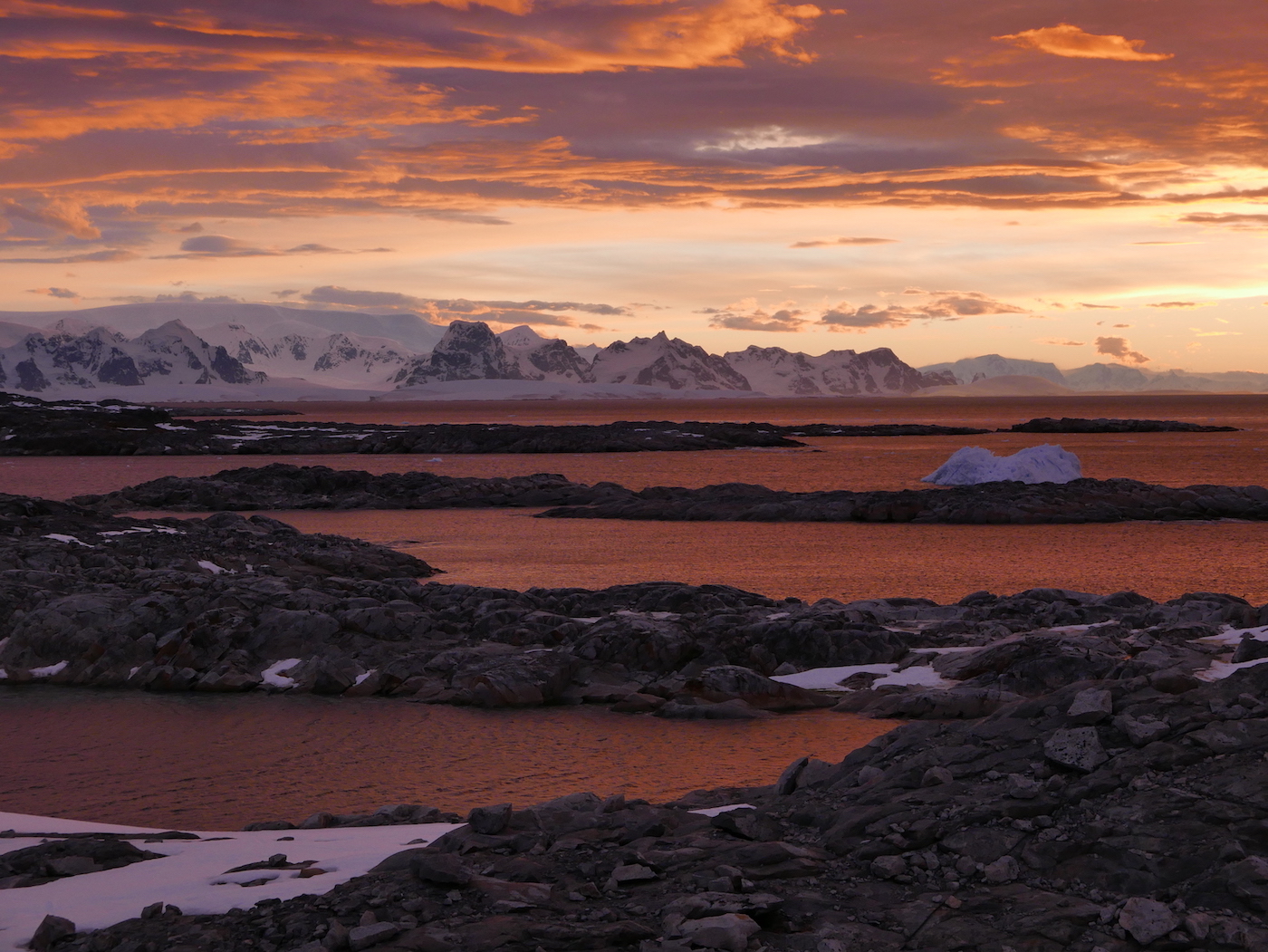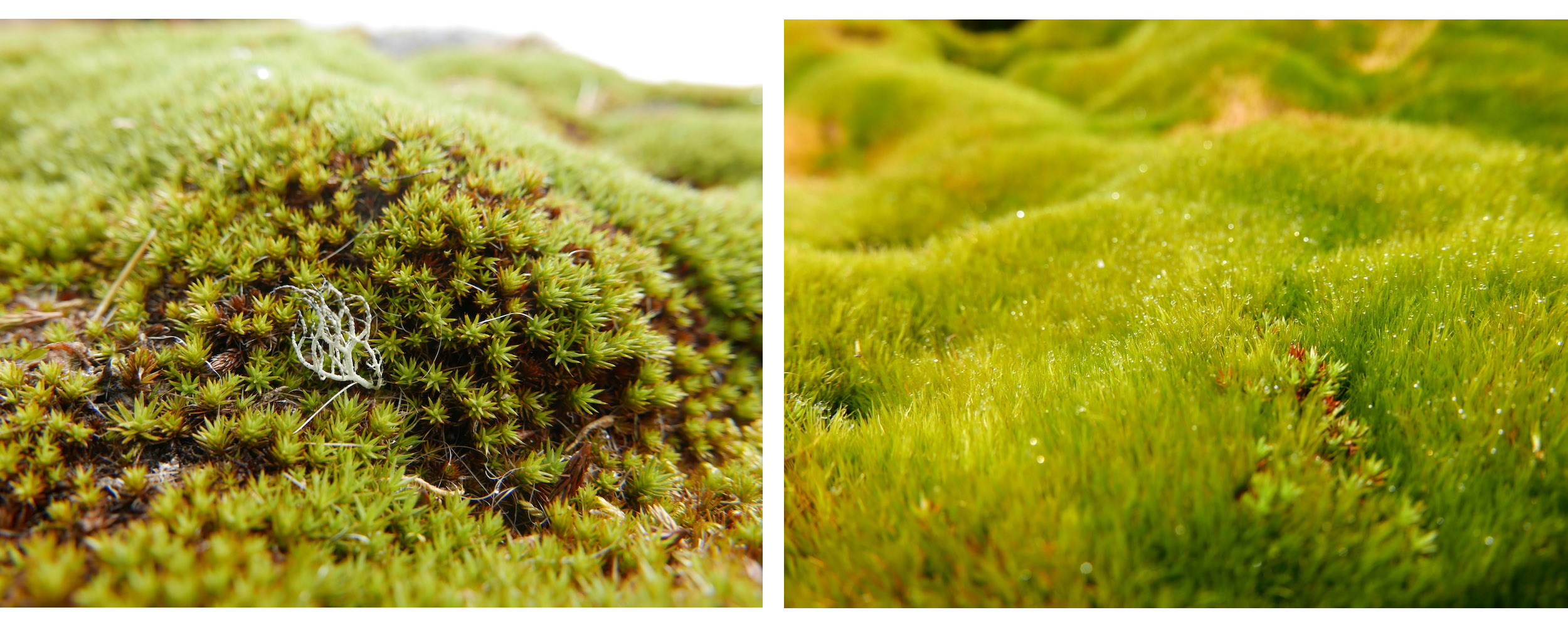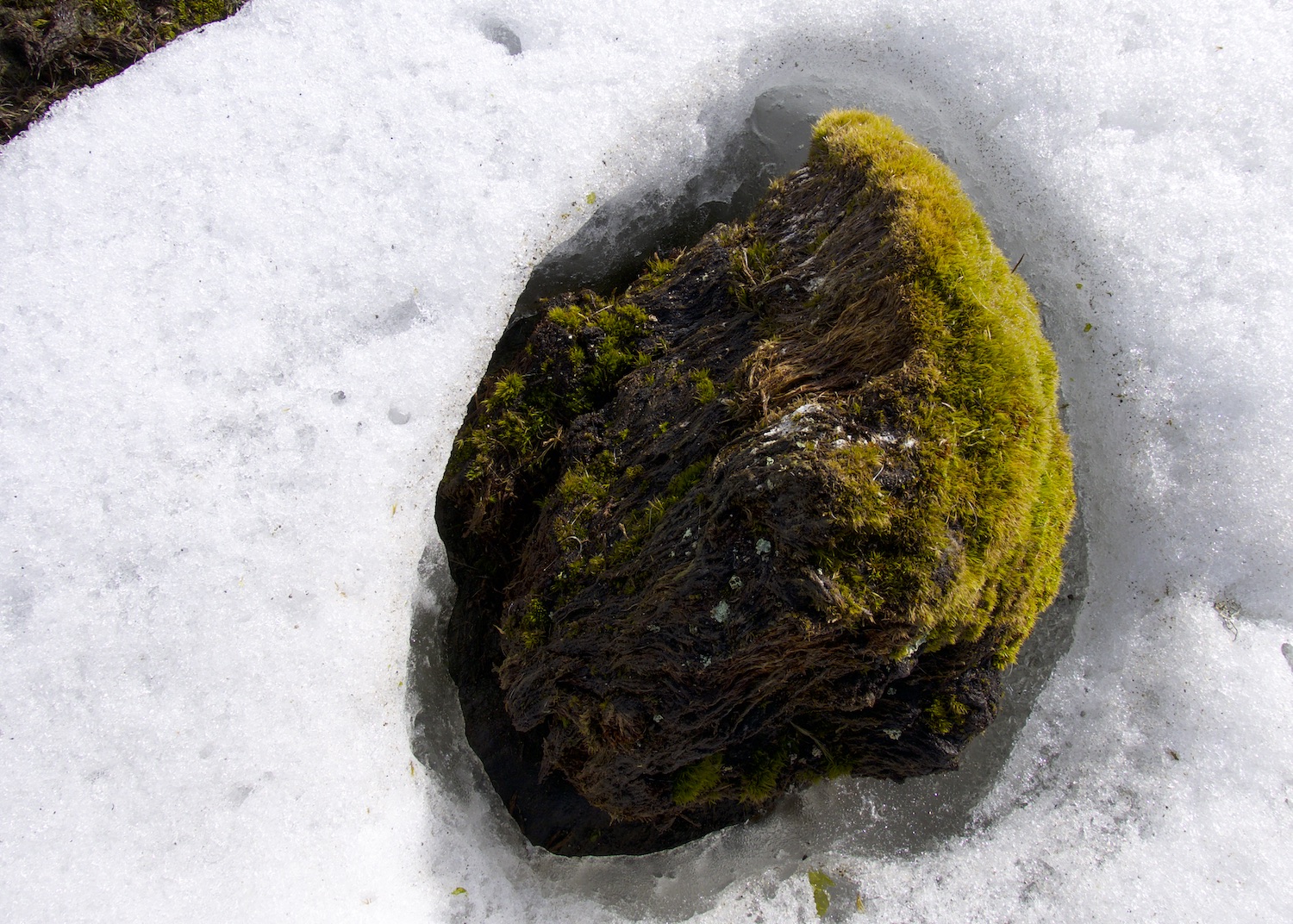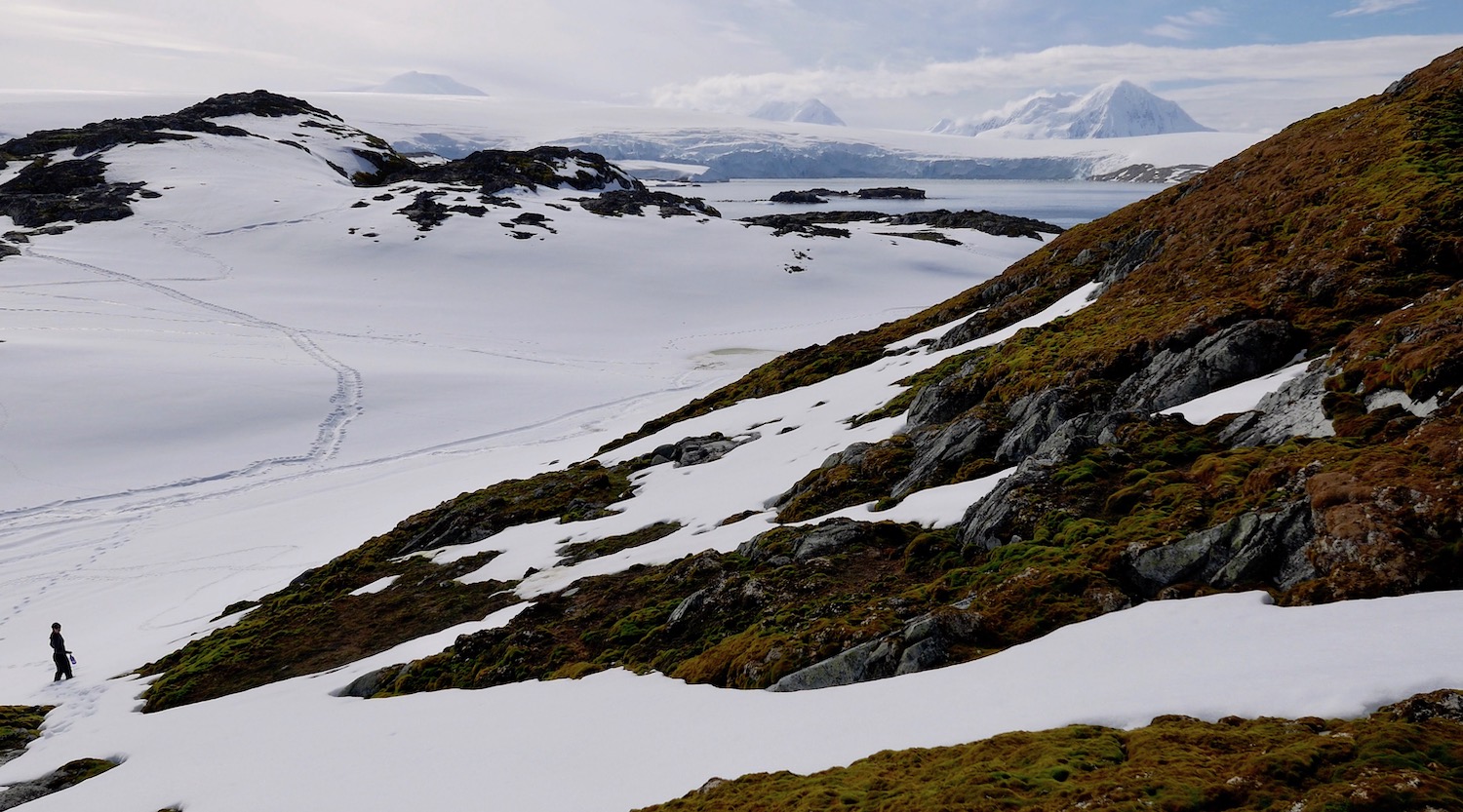Mosses in Antarctica:
Antarctica is a harsh but beautiful environment. Less than 1% of land in Antarctica is ice-free. Additionally, there are seasonal extremes in light conditions: from nearly sun all the time, to no sun at all! The photo below was taken at around 12:15 am - truly the land of the midnight sun!

Nevertheless, there is vegetation that survives the extreme environmental conditions, particularly mosses and lichens. There are about 100 moss species. The dominant peat-forming mosses (i.e., create thick carpets of organic materials) are in the genus Polytrichum (left photo, which shows a branchy Usnea antarctica lichen in the middle) and Chorisodontium (right photo). There are researchers that have observed shifts in the communities of mosses because of the warmer wetter conditions on the Antarctic Peninsula (did I mention the western Antarctic Peninsula is one of the fastest warming region of our planet?).

Mosses in Antarctica have ways to deal with Antarctic extremes. For example, they can:
- Take up nutrients and water through their leaf tissues.
- Create a biological antifreeze made up of sugars and sugar alcohols to prevent the formation of ice crystals inside their cells (ice crystal formation inside the cell could cause the cell to die).
- They also protect themselves from UV radiation by making antioxidants or by having a different color (e.g. orange-brown moss).
- Mosses can “resprout” again after being dormant for a long time. For example, the image below, from an isolated section of moss we found in the snow, shows new shoots growing from a seemingly dead moss section.

Indeed, mosses have even been revived from being dormant for about 1500 years! These mosses had been buried beneath the ice for that long! This feat of revival had so far been shown in microbes, but not plants!
I hope this has inspired you to view mosses in a different light (pardon the pun!)!
